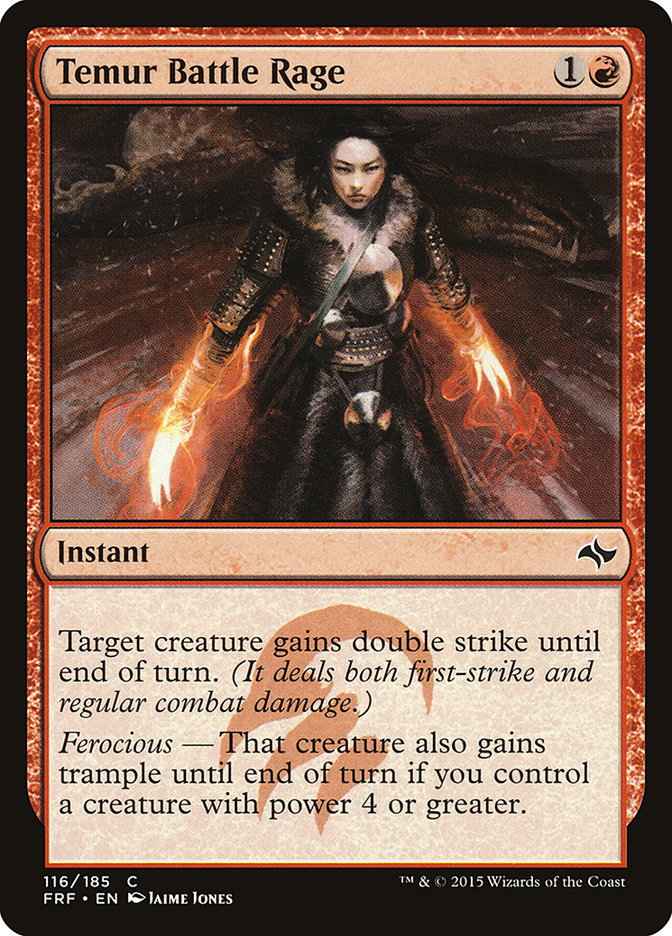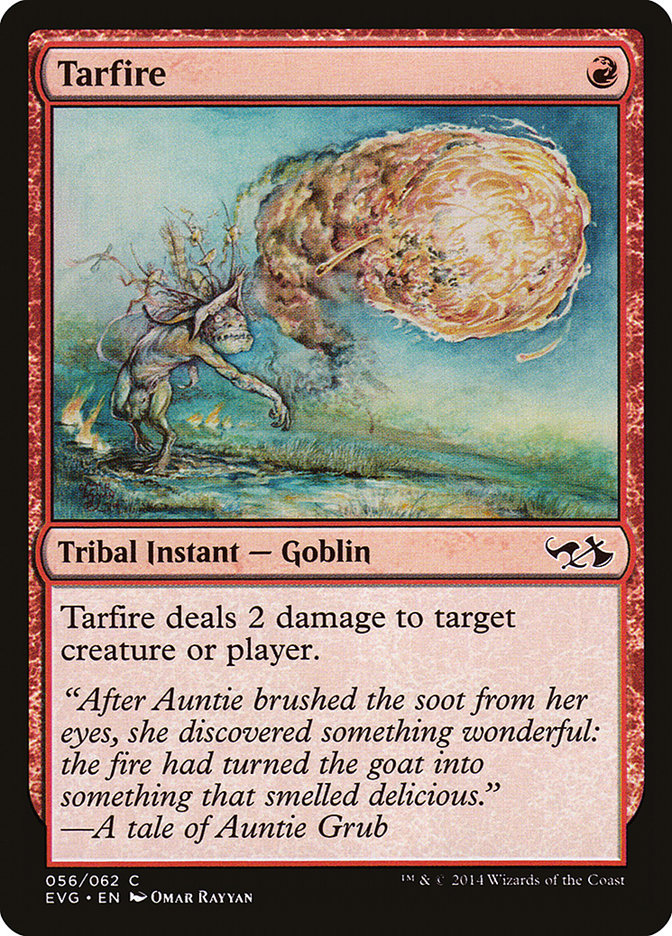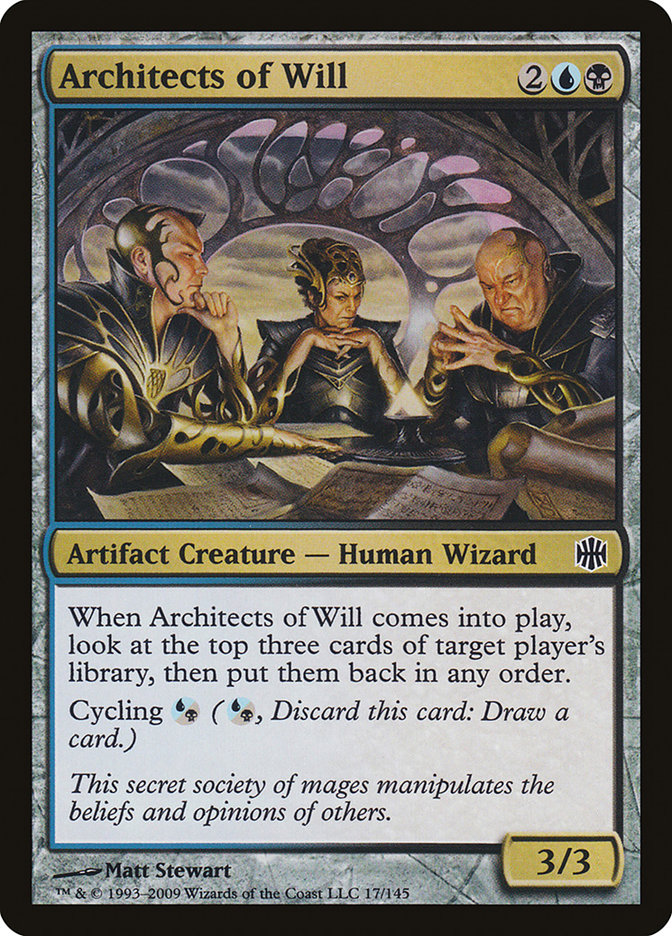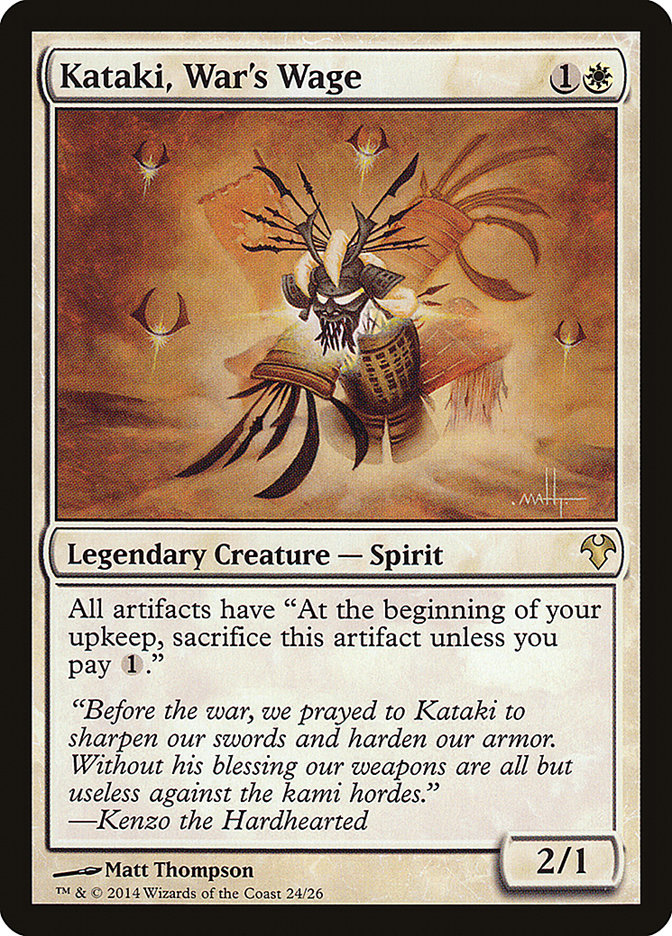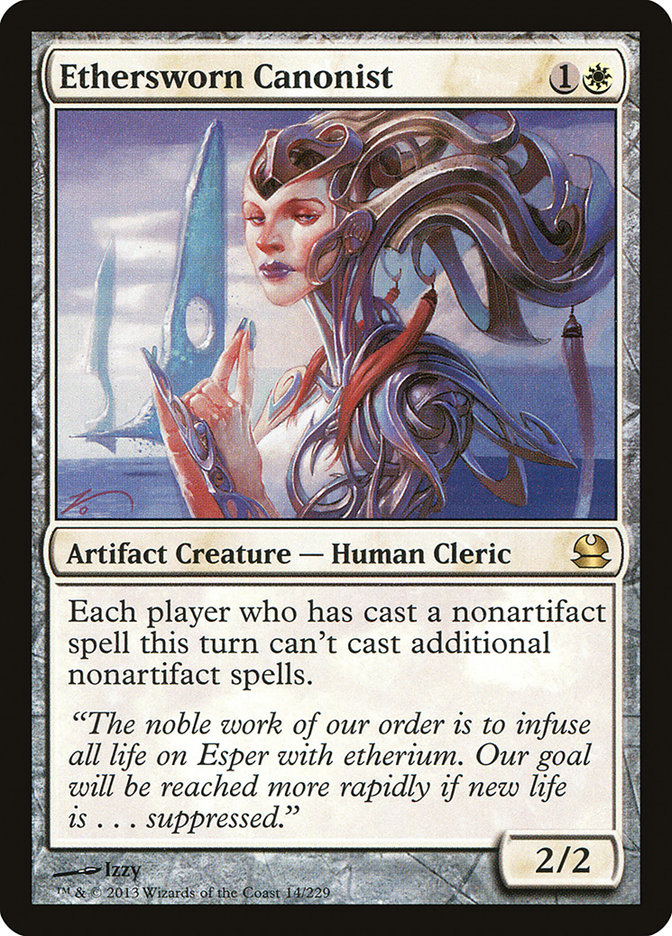Historically, my record with “the best deck” has been pretty good. As it turns out, Death’s Shadow is by far the best deck in Modern.
Oddly enough, last week I wrote about how I was scared of all the busted combo decks in the format, and I ended up being the one with the busted deck! Given how our weekend went, I’m pretty happy about that.
Creatures (13)
Planeswalkers (2)
Lands (18)
Spells (27)

For the how’s and why’s of the deck, you can do no better than reading Sam Black’s excellent piece earlier this week. And those for those wondering, the deck was created by Nikolas Labahn. Since then, many players have picked up the deck and performed incredibly well with it online. However, that online success hasn’t translated into the real world until now.
Going in, we didn’t quite understand what we were getting into. Sam was high on the deck, and that’s not something that happens often enough for him to give a strong recommendation. I was all set to play Grixis Delver, but something about the Death’s Shadow deck stood out to me. It looked very fast and very disruptive, which is exactly what I wanted.
The five of us who played the deck won something like 80% of our matches, which is kind of unreal. That’s a remarkable consistency that’s rarely seen these days. Death’s Shadow isn’t exactly a broken deck, but it does operate on some principles that tend to be present in broken decks. Still, I fully expect the format to develop to a point where Death’s Shadow is simply a deck among a sea of decks.
Perhaps the real lesson is that if Sam Black, Josh Utter-Leyton, and I are all playing the same deck, it’s probably busted. We are each known as brewers and deckbuilders, but our styles and the things we gravitate toward couldn’t be more different. Something very strange has to happen in order for us to all end up on the same deck.
I only lost matches in the tournament to the mirror, and I only lost them to Josh Utter-Leyton. In fact, my game win percentage was outrageous. I think I lost nine games the entire tournament.
As for the specifics, I think it’s important to share an updated list first, and then discuss why I’m making the changes that I’m making. This is what I’ll be battling with at SCG Indianapolis, although I’m sure I’ll end up changing some stuff.
Creatures (14)
Planeswalkers (2)
Lands (18)
Spells (26)

Going forward, the removal suite has to change a bit, as I expect far more mirror matches. Dismember is a card I wanted access to in the tournament, as turning on your Death’s Shadows earlier would be nice. Obviously that’s a fine line to walk, as you don’t want too many cards that cost you life, lest you risk entering the mid-game with a bunch of uncastable spells.
Which Liliana you play is interesting. Sam played Liliana, the Last Hope and Severa played Sam’s list, while David Ochoa was in the Liliana of the Veil camp with me and Josh. Ultimately, they’re both good, and I recognize that Liliana, the Last Hope is much better in certain matchups, hence the copy in my sideboard.
I will note that there were several games where Liliana of the Veil got to kill two larger creatures for me, which made getting through much easier. In those spots, Liliana, the Last Hope could potentially get you back a threat, which would also accomplish the same thing. Neither outcome is certain, and both of them are relatively the same power level in the deck. Which one you choose to play is up to you.
Temur Battle Rage is a fine way to end games, but it’s really not something you need. The combo decks tend to be good matchups because of the disruption and your fast clock, and you rarely need Temur Battle Rage to close the game out a turn earlier. In creature matchups, it can be important to have a Temur Battle Rage to get through blockers, but most of the time, they will lose once they have to start chump blocking unless they are very far ahead already. One copy of the card seems fine, especially since you can Traverse the Ulvenwald for Ghor-Clan Rampager if you absolutely need trample to end the game.
Tarfire is one of your best cards in certain matchups and one of the easiest ways to turn on delirium early. If you don’t count my matches against Burn, I used Tarfire on myself more often than my opponent or their creatures, so that should tell you exactly how useless Tarfire was for me over the course of the tournament.
That said, Traverse the Ulvenwald is a big part of your strategy, and if you don’t have delirium, it’s not very good. Being able to achieve delirium by turn 3 is of the utmost importance. Sometimes you don’t Mishra’s Bauble, which increases the necessity for something like Tarfire, which counts as two types.
My solution is to add a copy of Architects of Will to the deck, while keeping the removal count mostly the same. Having sorcery and land is kind of a given, so any other two types will do. It’s a one-mana card, like Tarfire, so I don’t think I’ll run into too many issues with having to pay mana to get delirium, as the more mana you have to pay to get it, the less efficient Traverse the Ulvenwald becomes.
In the vast majority of games, you’re going to Traverse the Ulvenwald for a threat. You don’t have time to mess around with Scavenging Ooze, Shriekmaw, or any other nonsense. The sideboard bullets I played at Grand Prix Vancouver (Ethersworn Canonist; Kataki, War’s Wage; and Ranger of Eos) were mostly useless.
Kataki often comes down too late, Ethersworn Canonist is only powerful against your good matchups, and Ranger of Eos is a little slow. Of those, Ranger of Eos is at least defensible, but going forward, I wouldn’t splash the white.
What about Lingering Souls? As it turns out, it does very little in the mirror. They tend to stick a threat and put you into The Abyss early, and while Lingering Souls can buy you some time, it rarely solves any problems. If you really want to beat the mirror, play more spot removal.
The sideboard is probably missing some key cards, but I think I have all my bases covered. You can’t really sideboard too much with this deck, but at the same time, I felt like my sideboard at the Grand Prix was too narrow. I didn’t have any good versatile cards to bring in for the matchups where I didn’t have much to bring in.
Sideboarding and Matchup Guide
Jund
In:
Out:
The games are going to be a war of attrition for the most part. Thankfully, the Death’s Shadow deck is well-equipped to win that battle. You’re going to lose to Dark Confidant or bigger stuff like Huntmaster of the Fells, so try to keep that in mind.
Siding out the Forest on the draw is acceptable in grindy matchups and against combo decks. If you want to keep in a Tarfire for Dark Confidant and Liliana of the Veil, that’s understandable.
Abzan
In:
Out:
Here we have a lot of flexibility, so this part isn’t one-for-one.
Maelstrom Pulse is a given for fighting Lingering Souls, but how else you choose to fight Spirit tokens is up to you. Siding in one Surgical Extraction doesn’t seem like the worst idea, nor does potentially keeping in the Temur Battle Rage. Kozilek’s Return is narrow, but serviceable.
The other thing to note is that I’m bringing in Big Game Hunter here, but not against Jund, but obviously that depends on what type of Abzan they are. Grim Flayer, Siege Rhino, and Anafenza, the Foremost are much more popular than Dark Confidant, so you’ll likely have some premium targets.
Jund is likely a good matchup, whereas Abzan might be one of the worst. They replace their Lightning Bolts with Path to Exile and Fatal Push, plus they have Lingering Souls to win the attrition war.
In:
Out:
Maybe Big Game Hunter is nonsense, but it should always kill something and having a chump blocker is a nice way to win a race. With Liliana, the Last Hope and Kolaghan’s Command, recurring it is nice, plus you can always find it with Traverse the Ulvenwald.
The early game will see both players exchanging resources and one player will inevitably end up ahead on creatures. At that point, very little will allow the other player to come back.
Your threats hit so hard that they don’t have enough time to find removal spells, so your goal should be to stick a threat while not allowing them to do the same.
Burn
In:
Out:
Burn is one of the most interesting matchups. You might think that a deck that actively tries to damage itself would be a huge dog to Burn, but that’s just not the case.
They tend to do your job for you, making it comically easy to deploy large Death’s Shadows early. From there, your disruption can strip their hand, and your removal can clear their blockers. You give them very few draw steps to find ways to deal those last few points of damage.
Given how my games played out at the Grand Prix, I would have assumed that a player could save up their Lava Spikes and aim for a two-turn lethal, but that’s not exactly possible either. Josh’s opponent in the Top 8 did just that, but you end up losing to Collective Brutality and the discard anyway. The correct plan for Burn might be to proceed as normal.
Deflecting Palm is the main thing to play around in the post-sideboard games, and doing so is almost trivial once you know it’s there.
In these faster matchups where they can’t interact with your creatures, siding out a Traverse the Ulvenwald is completely serviceable. They are a little clunky and your first threat typically kills them anyway.
Affinity
In:
Out:
I didn’t have the pleasure of playing against Affinity, but my teammates did and I think they won all their matches. Since we’re Jund, we have the tools to defeat them if we want, and I think this current configuration is enough.
How much discard to keep in your deck is difficult, since you definitely want something to do on turn 1. Since we’re sideboarding in a bunch of great removal, that becomes less relevant in the post-sideboard games, but is still something to consider.
Dredge
In:
Out:
This is one of those matchups where you’d like to have the second Temur Battle Rage if possible. Given how unpopular Dredge is, I’m not concerned with that.
Overall, this matchup doesn’t seem great. Most of your cards don’t interact well with them, and you’re basically just racing. Post-sideboard, you have some interaction, and hopefully it’s enough to slow them down.
Eldrazi Tron
In:
Out:
Inquisition of Kozilek can be weak here, so I could see trimming a copy, but you really want one in your opening hand. Expect them to have things like Chalice of the Void in their deck after sideboarding, which is why I bring in the Ancient Grudges. It’s also another reason to keep in Inquisition of Kozilek, despite it not being great against their starting 60.
Your creatures are usually bigger, which is something Eldrazi isn’t particularly used to going up against. If you prevent them from doing broken things, you should win rather easily.
On the draw, you probably want something else instead of the third Fulminator Mage, as it can be too slow. Big Game Hunter and Fatal Push are reasonable choices. Maelstrom Pulse is a fine choice if you want another way to blow up Chalice of the Void, but it is very slow.
Temur Battle Rage gets the axe, but it doesn’t have to. I’d just prefer to have more removal instead of a way to break through. Don’t forget there’s still a Ghor-Clan Rampager in the deck.
Going Forward
Obviously Modern is made up of many other archetypes than just those listed above, but this should lay the groundwork for an understanding of sideboarding and what matters in the matchups. The sideboard could certainly be better, and that’s what I’ll be working on the most between now and SCG Indianapolis.
There’s also much work to be done in refining the maindeck, especially as I anticipate a format shift to happen at some point as a result of the Death’s Shadow deck being a favorite against the majority of archetypes people are playing these days.
This is a slightly different option.
Creatures (13)
Planeswalkers (2)
Lands (18)
Spells (27)

During a deck check in a Round 8 mirror match, my opponent (Stephen Barnett) made an offhand comment about wanting to get a Snapcaster Mage in the deck. I more or less jotted down the above decklist. All it takes is one spark for me to get the ball rolling.
If you want more Affinity hate, you could easily splash Ancient Grudge off a Blood Crypt. They play nicely with Thought Scour and are probably your best option. As is, this list is much better against combo and grindy decks but weaker against creature decks. Ideally I would have another removal spell or two, the fourth copy of Traverse the Ulvenwald, and maybe an Architects of Will, but Thought Scour basically takes the place of those.
Maybe Tarfire was perfect all along? Snapcaster Mage is cute, but I rejected Renegade Rallier for reasons that apply to Snapcaster Mage too. The body is mostly irrelevant and the deck only has to grind in certain matchups. How often are we going to want that sort of card?
The hope is that the 2/1 body is relevant in the mirror and that it puts you over the top in your removal count. Then again, the mirrors might all start adopting Liliana, the Last Hope, and then your 2/1 looks downright foolish.
Stubborn Denial, like Ethersworn Canonist, mostly only helps your good matchups.
If you absolutely hate Tarfire (like Josh Utter-Leyton) and want an alternative, this is it.




